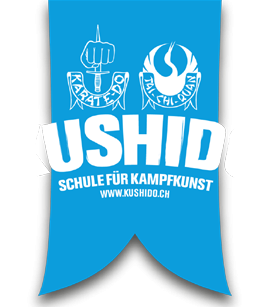History
| The history of Kushido |
The roots of Kushido... reach into the classical Karate in Japan and Okinawa, although the actual birth of Kushido was the 1st Jan. 1963. At that time the founder Hugh St John Thomson and his wife together with 7 students opened his first school in Cape Town South Africa. The style was based on Shotokan but also had elements of Kyokushinkai and was called Karate-Do. The added Do (way) expressed that the school was following the original and traditional Budo spirit (martial arts). 1965 two highly graded Shotokan instructors, Taiji Kase and Hiroshi Shirai were invited to South Africa and taught at the still very young school. Hugh found that despite the high quality of teaching they were keeping some knowledge to themselves and then decided to investigate in Japan himself. He studied Okinawa – Goju and Shorin, the mother system of Shotokan, as well as Aikido and Kendo. He returned with a Shihan title (master) and built his new experiences into the concepts and training methods of his school. 1967 – in the mean time more Dojo’s joined the Cape Town school and Karate-Do became an independent style that incorporated the Western mentality and needs. Ranks of other systems were not recognised any more. The school expanded throughout the whole country and became the…. …stem… of Karate-Do International. The founder introduced his school and style in 1970 when he took part in a referee course and became the first and youngest Westerner who became chief referee in Tokio and refereed in the first Karate World Championship. 1971 Francis Rink opened a Karate-Do school in Rhodesia, 1972 Leon Pantanowitz in Israel. Both were students of Shihan Hugh from the beginning. Later Switzerland, England, Alderney, Holland, USA, Australia and Mauritius followed. 1988 the name Karate-Do was changed to Kushido. Through the name change and further development, Kushido disassociated itself from the worldwide development of sport karate and championships. Additionally to Karate-Do, Tai Chi and Kobudo were introduced as well. Through the internationalising and growth Kushido developed further and spread itself like the ... the crown ... of a tree. After Kushido in Israel became independent in 1995, Kushido Europe made the step to independence in 2000 under the leadership of Renshi Paul Baumann of Kushido Switzerland, in agreement with all the black belts in Europe. The longstanding relationship with chief instructor Hanshi Denis in Cape Town, many Shihans in South Africa, Australia, USA and many other instructors happily remain. Kushido Switzerland Paul Baumann studied with the founder Kancho Hugh and Chief instructor Hanshi Denis from 1983 – 1986 in South Africa. He founded Kushido Switzerland (then Karate-Do) 2nd June 1986 in Stansstad because the first school in Urdorf run by Werner Bürgi changed to Goju-Kai. So far 3 more Kushido schools, that work closely together, opened their doors; Hochdorf (1989), Zug (1997), Lucerne (2000) and Winikon (2011). The black belt team has on many occasions run the school whilst Paul Baumann and his wife Juanita have been away for longer periods in South Africa for further education. They trained mostly with Hanshi Denis St. John Thomson, 8th Dan who is a leading figure in Kobudo and the softer arts Tai-Chi and Qi Gong. Paul Baumann was given the title Shihan by the founder in 1997 – the first in Kushido Europe, thereafter 6th Dan in 1999. This rank has been awarded in Kushido only 7 times worldwide. In 1999 Juanita Baumann was awarded 5th Dan and Shihan. 2005 Paul Baumann was given the title Renshi. Since 1994 Paul Baumann has been chief instructor of Kushido Europe and runs the promotion courses for black belts. Kushido Switzerland has since developed as the centre point of Kushido Europe.
|


